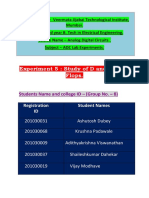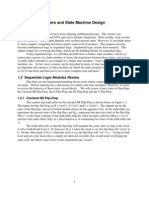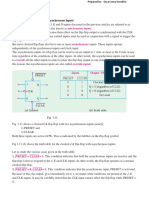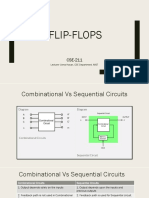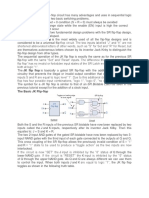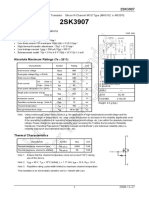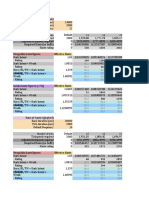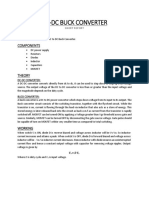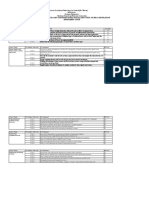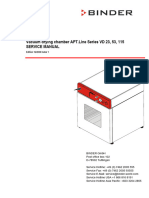0% found this document useful (0 votes)
81 views22 pagesD and JK FF
This document discusses static and dynamic D flip-flops. It explains that flip-flops can be categorized based on their inputs and triggering. Static flip-flops are unclocked or use a single clock edge, while dynamic flip-flops are clocked and use two clock edges. The document then provides experiments to build static and dynamic D flip-flops using logic gates and observe their behavior and truth tables. It also discusses JK flip-flops, including how they can be triggered by a single or double clock edge in master-slave configuration.
Uploaded by
Rawan AyyoubCopyright
© © All Rights Reserved
We take content rights seriously. If you suspect this is your content, claim it here.
Available Formats
Download as PDF, TXT or read online on Scribd
0% found this document useful (0 votes)
81 views22 pagesD and JK FF
This document discusses static and dynamic D flip-flops. It explains that flip-flops can be categorized based on their inputs and triggering. Static flip-flops are unclocked or use a single clock edge, while dynamic flip-flops are clocked and use two clock edges. The document then provides experiments to build static and dynamic D flip-flops using logic gates and observe their behavior and truth tables. It also discusses JK flip-flops, including how they can be triggered by a single or double clock edge in master-slave configuration.
Uploaded by
Rawan AyyoubCopyright
© © All Rights Reserved
We take content rights seriously. If you suspect this is your content, claim it here.
Available Formats
Download as PDF, TXT or read online on Scribd
/ 22
